- Clone
- 5C3 (See other available formats)
- Regulatory Status
- RUO
- Workshop
- V CD40.4
- Other Names
- BP50, TNFRSF5
- Isotype
- Mouse IgG1, κ
- Ave. Rating
- Submit a Review
- Product Citations
- publications

-

Human peripheral blood lymphocytes stained with anti-human CD19 FITC and anti-human CD40 (clone 5C3) PE/Fire™ 810 (left) or stained with anti-human CD19 FITC only (right)
CD40 is a 48 kD type I glycoprotein also known as BP50. It is a member of the TNFR superfamily primarily expressed on B cells, macrophages, follicular dendritic cells, endothelial cells, fibroblasts, and at low levels on plasma cells. CD40 has been reported to be involved in B cell differentiation, costimulation, isotype class-switching, and protection of B cells from apoptosis. Additionally, CD40 is important for T cell-B cell interactions. The ligand of CD40 is CD154 (CD40 ligand). The 5C3 antibody has been reported to promote B cell proliferation in the presence of anti-IgM, IL-4 or PMA, partially blocking CD40 binding to CD40L, and B cells rescue from apoptosis.
Product DetailsProduct Details
- Verified Reactivity
- Human, Cynomolgus, Rhesus
- Reported Reactivity
- Baboon, Chimpanzee, Squirrel Monkey
- Antibody Type
- Monoclonal
- Host Species
- Mouse
- Formulation
- Phosphate-buffered solution, pH 7.2, containing 0.09% sodium azide and BSA (origin USA)
- Preparation
- The antibody was purified by affinity chromatography and conjugated with PE/Fire™ 810 under optimal conditions.
- Concentration
- Lot-specific (to obtain lot-specific concentration and expiration, please enter the lot number in our Certificate of Analysis online tool.)
- Storage & Handling
- The antibody solution should be stored undiluted between 2°C and 8°C, and protected from prolonged exposure to light. Do not freeze.
- Application
-
FC - Quality tested
- Recommended Usage
-
Each lot of this antibody is quality control tested by immunofluorescent staining with flow cytometric analysis. For flow cytometric staining, the suggested use of this reagent is 5 µL per million cells in 100 µL staining volume or 5 µL per 100 µL of whole blood. It is recommended that the reagent be titrated for optimal performance for each application.
* PE/Fire™ 810 has a maximum excitation of 488/561 nm and a maximum emission of 810 nm.
Excessive exposure to light, and commonly used fixation, permeabilization buffers can affect PE/Fire™ 810 fluorescence signal intensity and spread. Please keep conjugates protected from light exposure. For more information and representative data, visit our Fire Dyes page. - Excitation Laser
-
Blue Laser (488 nm)
Green Laser (532 nm)/Yellow-Green Laser (561 nm)
- Application Notes
-
Additional reported applications (for the relevant formats) include: costimulation of B cell proliferation1, partial inhibition of CD40 binding to CD40L3, and B cell rescue from apoptosis1. The LEAF™ purified antibody (Endotoxin <0.1 EU/µg, Azide-Free, 0.2 µm filtered) is recommended for functional assays.
-
Application References
(PubMed link indicates BioLegend citation) -
- Schlossman SF, et al. 1995. ed. Leukocyte Typing V:White Cell Differentiation Antigens. New York:Oxford University Press.
- Yoshino N, et al. 2000. Exp. Anim. (Tokyo) 49:97. (FC)
- Pound JD, et al. 1999. Int. Immunol. 11:11.
- Shey MS, et al. 2014. J Immunol. 192:4833. PubMed
- Sondergaard JN, et al. 2014. Mol Immunol. 59:180. PubMed
- Saiki O, et al. 1995. J Clin. Invest. 2: 510-4 (Costim)
- RRID
-
AB_2936530 (BioLegend Cat. No. 334355)
Antigen Details
- Structure
- TNFR superfamily, type I glycoprotein, 48 kD
- Distribution
-
B cells, macrophages, follicular dendritic cells, endothelial cells, fibroblasts
- Function
- B cell differentiation, costimulation, isotype class-switching, rescues B cells from apoptosis
- Ligand/Receptor
- CD154 (CD40 ligand)
- Cell Type
- B cells, Dendritic cells, Endothelial cells, Fibroblasts, Macrophages
- Biology Area
- Cell Biology, Costimulatory Molecules, Immunology, Neuroscience, Neuroscience Cell Markers
- Molecular Family
- CD Molecules
- Antigen References
-
1. Banchereau J, et al. 1994. Annu. Rev. Immunol. 12:881.
2. Foy T, et al. 1996. Annu. Rev. Immunol. 14:591. - Gene ID
- 958 View all products for this Gene ID
- UniProt
- View information about CD40 on UniProt.org
Related FAQs
Other Formats
View All CD40 Reagents Request Custom ConjugationCustomers Also Purchased
Compare Data Across All Formats
This data display is provided for general comparisons between formats.
Your actual data may vary due to variations in samples, target cells, instruments and their settings, staining conditions, and other factors.
If you need assistance with selecting the best format contact our expert technical support team.
-
Alexa Fluor® 488 anti-human CD40
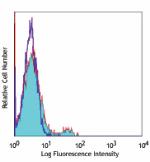
Human peripheral blood lymphocytes stained with 5C3 Alexa Fl... -
Purified anti-human CD40
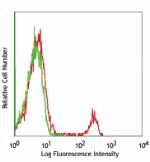
Human peripheral blood lymphocytes stained with purified 5C3... -
FITC anti-human CD40
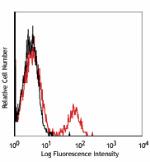
Human peripheral blood lymphocytes stained with 5C3 FITC -
PE anti-human CD40
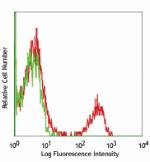
Human peripheral blood lymphocytes stained with 5C3 PE -
APC anti-human CD40
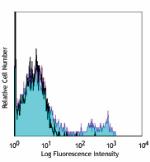
Human peripheral blood lymphocytes stained with 5C3 APC -
Alexa Fluor® 647 anti-human CD40

Human peripheral blood lymphocytes stained with 5C3 Alexa Fl... -
PerCP/Cyanine5.5 anti-human CD40

Human peripheral blood lymphocytes stained with CD19 APC and... -
Pacific Blue™ anti-human CD40
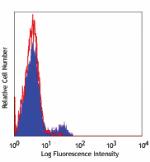
Human peripheral blood lymphocytes stained with 5C3 Pacific ... -
PE/Cyanine7 anti-human CD40

Human peripheral blood lymphocytes were stained with anti-hu... -
APC/Cyanine7 anti-human CD40

Human peripheral blood lymphocytes were stained with anti-hu... -
Alexa Fluor® 700 anti-human CD40
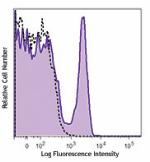
Human peripheral blood lymphocytes stained with CD40 (clone ... -
Purified anti-human CD40 (Maxpar® Ready)
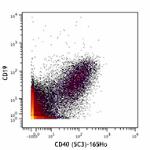
Human PBMCs stained with 142Nd-anti-CD19 (HIB19) and 165Ho-a... -
Brilliant Violet 510™ anti-human CD40
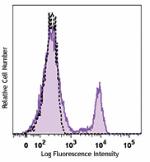
Human peripheral blood lymphocytes were stained with CD40 (c... -
Brilliant Violet 421™ anti-human CD40

Human peripheral blood lymphocytes were stained with CD40 (c... -
Brilliant Violet 711™ anti-human CD40
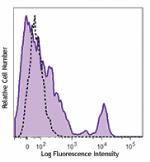
Human peripheral blood lymphocytes were stained with CD40 (c... -
Brilliant Violet 605™ anti-human CD40
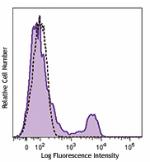
Human peripheral blood lymphocytes stained with CD40 (clone ... -
Brilliant Violet 650™ anti-human CD40
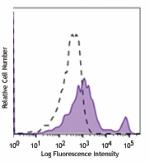
Human peripheral blood lymphocytes were stained with CD40 (c... -
Brilliant Violet 785™ anti-human CD40
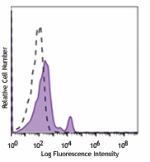
Human peripheral blood lymphocytes were stained with CD40 (c... -
PE/Dazzle™ 594 anti-human CD40
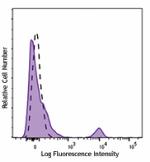
Human peripheral blood lymphocytes were stained with CD40 (c... -
Biotin anti-human CD40
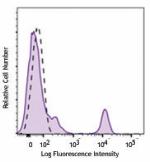
Human peripheral blood lymphocytes were stained with biotiny... -
APC/Fire™ 750 anti-human CD40
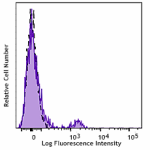
Human peripheral blood lymphocytes were stained with CD40 (c... -
TotalSeq™-A0031 anti-human CD40
-
TotalSeq™-C0031 anti-human CD40
-
Ultra-LEAF™ Purified anti-human CD40
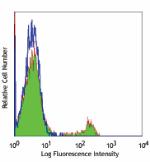
Human peripheral blood lymphocytes stained with LEAF™ purifi... -
TotalSeq™-B0031 anti-human CD40
-
TotalSeq™-D0031 anti-human CD40
-
PE/Fire™ 810 anti-human CD40

Human peripheral blood lymphocytes stained with anti-human C...










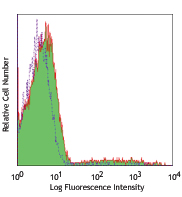
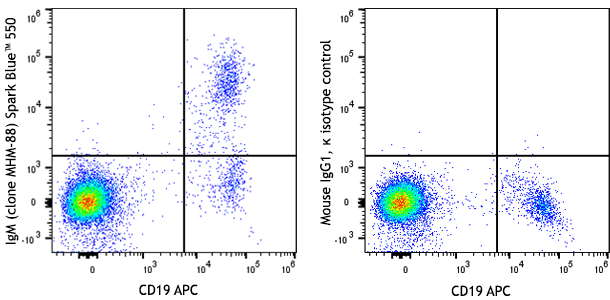





Follow Us